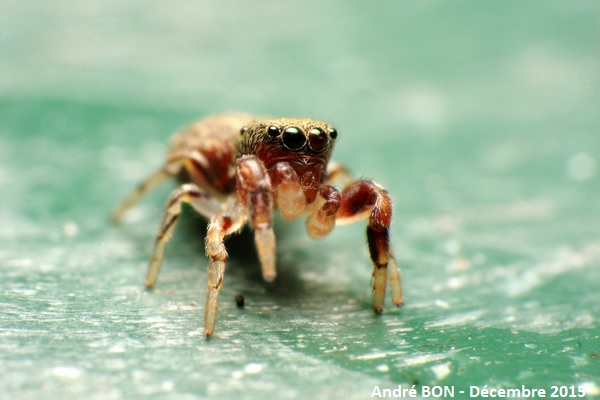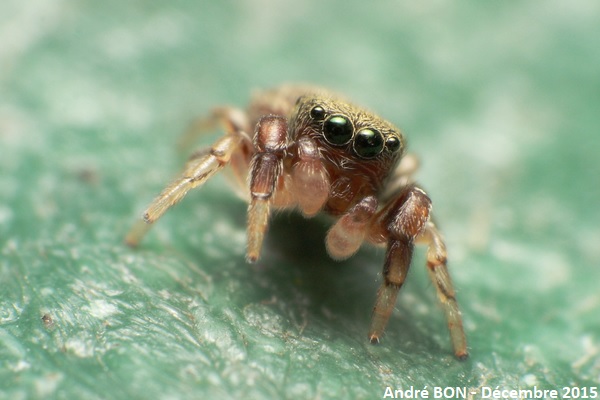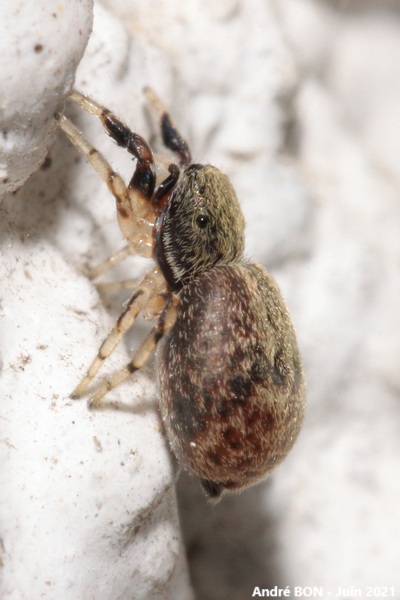




| Ballus chalybeius (Walckenaer, 1802) |





|
|
Scientific name: Ballus chalybeius (Walckenaer, 1802) Common name: French name: Order: Araneae Family: Salticidae Size: 2.7 to 3.7 mm. Biotope: On bushes and low growing vegetation, on deciduous forests edges, sometimes down in the litter. Web: No web. Spiders of the Salticidae family chase by looking at preys with their big size eyes. They move by jumping. Observation period: April to October (to be confirmed as observed in December). Geographic area: Europe, east to Central Asia, North Africa. |
Male Ballus chalybeius are black in colour with sparse and very short white hairs. Females and juveniles show a reddish brown abdomen with some blackish markings. The cephalothorax is more greyish in colour. The fore legs show some reddish colour, the hind legs are paler or even translucent. They bear black longitudinal or oblique streaks ending as thin ring at the apex of segments. Males' fore legs are thicker. The most typical marking for this species is the longitudinal black streak running on the femur and tibia of legs IV. Ballus rufipes shows a black streak running on the entire length of legs IV. This streak is limited to femur and tibia on Ballus chalybeius. |
| [To know more about the Ballus chalybeius] [Next picture] [Top] |

|
I found this jumping spider in the litter and I moved it to a more suitable place for a shooting pictures. You clearly see that the longitudinal black streak is limited to femur and tibia on this picture. |
| [To know more about the Ballus chalybeius] [Next picture] [Previous picture] [Top] |

|
I think that that the thick fore legs indicate a male. The brown colour of the abdomen indicates a juvenile. |
| [To know more about the Ballus chalybeius] [Next picture] [Previous picture] [Top] |

|
This Ballus chalybeius was kind to pose so that I can take a very sharp front picture. |
| [To know more about the Ballus chalybeius] [Next picture] [Previous picture] [Top] |

|
After the male I think here is the female. |
| [To know more about the Ballus chalybeius] [Previous picture] [Top] |

|
Side view. The dark markings on the legs are characteristic. |